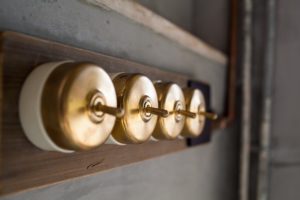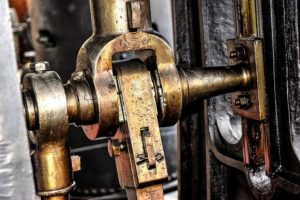Metals have been part of both vintage and modern home interior designs, but never has it been more emphasized than in the last three years where they almost replaced elements that have just recently been introduced. It’s not that metals have not had its share of fame before but to see them re-emerging from traces of antiquity is unprecedented. This may be the perfect time to add brass sheet metal and other types of copper-based material into your home structure and décor.
Living Room
Nothing sounds more thrilling to a host’s ears than the whispers of amazement from guests entering their home for the first time. Who wouldn’t be amazed to be received in a living room fully furnished with the best interior design elements available, not to mention brass and bronze framed furniture and trims? You can incorporate these metals in every corner of the living room from the feet of your center table to the cladding on your lamp post. They can easily fit even the most conservative and minimalist design options.
Kitchen
The kitchen is a welcome relief for all kinds of copper-based furniture and fixtures. Even before the comeback of metal in the world of interior design, there already were lots of elements in the kitchen that are made from either bronze or brass, such as the hinges of your cupboards and the pipes underneath your zinc. Today, brass and bronze have more presence, and are becoming all the rage. Backsplashes and countertops can now be covered with brass sheets and the entire plumbing system can be all brass to prevent corrosion. Copper-based alloys are perfect for these applications because they have antimicrobial properties, which are extremely vital in such setting.
Bathroom
Want to make your bathroom more sparkly and shiny instead of the traditional all white theme? Then you should consider incorporating brass or bronze into its design. There are many elements in your kitchen that look best when made of either metal. Your faucet, pop-up stopper, mirror frame, and towel rings are the best example. Not only do they give an interesting contrast to the rather monotonous shade of your bathroom but it’s ideal due to the same antimicrobial properties that make them suitable for your kitchen.
Bedroom
You may not notice it but your bedroom has just as much copper in it as the rest of your home. The frame of your bed and the springs in your mattress are all made from a particular brass or bronze alloy. The handles on your wardrobes and drawers are very likely made of either metal as well. In fact, on your way to your room, you probably held on the brass railing along your stairs.
Copper, brass, and bronze can be found in almost every nook and cranny of your home but we tend to ignore them because they are quite inconspicuous. Thankfully, though, even if they get little attention, they still remain attractive for a long time because they are hardy against corrosion. They are practically maintenance free, although if you are not a fan of their antique look when they start developing patina, you have to polish them regularly to preserve their yellowish, gold-like sheen.
Superior copper-based products are quite difficult to find, so where to buy brass sheet metal if you need one for your home improvement project? Well, fortunately, a trusted metal supplier in North America, such as Rotax Metals, that specializes in copper-based products can help you out.




